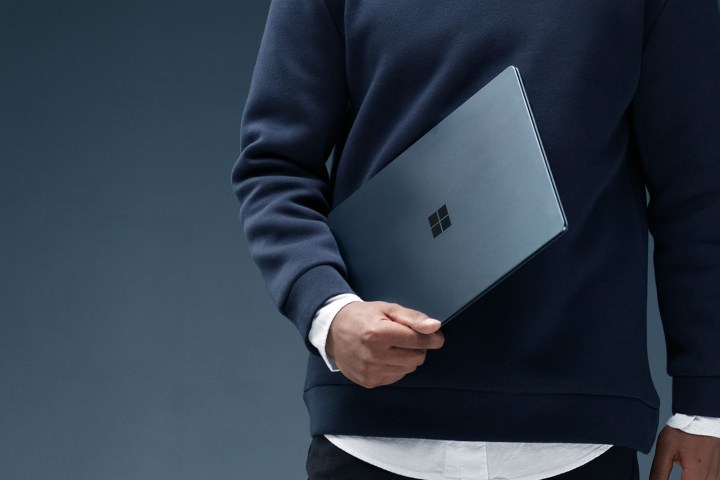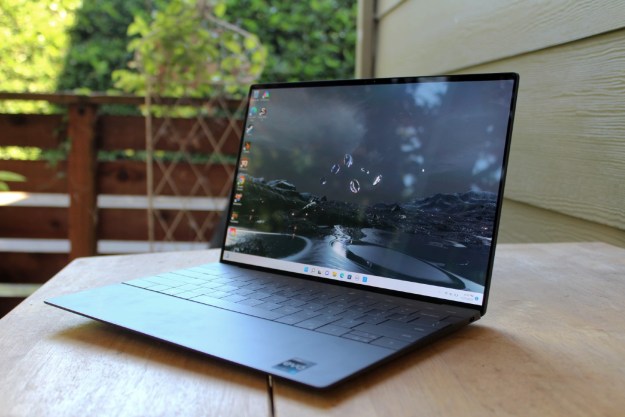
Microsoft’s release of the first Surface Pro in 2013 raised more than a few eyebrows.
The company had never entered the hardware space before and PC builders, already in the middle of a downturn, didn’t need competition.
At the time, most manufacturers responded to Surface dismissively. Lenovo’s CEO, Yang Yuanqing, told PC World “…I don’t believe they can provide the best hardware in the world. Lenovo can.” Todd Bradley, then head of HP’s PC division, was harsher still, and told Citeworld “I’d hardly call the Surface competition…it tends to be slow and a little kludgey as you use it.”
It was easy to be skeptical at the time, and I was no exception. I didn’t like the early Surface devices, and felt Microsoft didn’t deliver a product that was useful to most people. That remained true even while my opinion of newer Surface devices improved with each generation. Surface was a luxury brand, targeted at the most hardcore.
Now, with the introduction of the Surface laptop, that’s changed.
More than a blueprint
Predictably, Microsoft has never claimed it seeks competition with the manufacturers that build Windows PCs. Even if it were true, such an admission wouldn’t win the company much favor. Instead, the company carefully managed its message, reassuring the world that its hardware partners wouldn’t be shut out, and that the Surface team wouldn’t get access to special or early builds of Windows. Surface was portrayed as a blueprint for what Microsoft thought tomorrow’s PC should look like.
That was an easy line to believe when Microsoft only built the Surface and Surface Pro. Even the Book and Studio did little to disrupt. Except for the now discontinued Surface, which had its own troubles, all company’s devices were too expensive for most people to consider, and their design is at the leading edge of PC technology. They weren’t the kind of PC an average home user wants.
Microsoft’s Surface Laptop changes the equation. Starting at $1,000, and featuring a 13.5-inch touchscreen, it’s the very model of a high-end laptop. It competes directly against the Dell XPS 13, the HP Spectre 13 x360, the Lenovo ThinkPad X1 Carbon, and other flagships. It’s still more expensive than the laptops most people buy, but it’s no more unobtainable than the laptops just mentioned.
In a way, it does remain a blueprint. The Surface Laptop makes several interesting design choices that represent where tomorrow’s devices could head. It has a fabric interior, a solid-state drive embedded on the motherboard, and pairs respectable key travel with a robust battery. Yet it’s not priced or positioned as a concept. It’s a device that absolutely anyone seeking a luxury PC could buy and use everyday without complaint.
The competition is real
The Surface Laptop makes a lot of sense for Microsoft. It helps bring the Surface experience to a wider variety of users, at a price point that’s more obtainable (yes, I know the entry-level Surface Pro 4 is $749 – but it’s out of date, and makes a lot of sacrifices to get there). A laptop gives Microsoft a platform to show off the many Windows 10 features that aren’t related to touch, and puts the company’s hardware in front of a new audience.
Surface was a luxury brand, targeted at the most hardcore. Now, that’s changed.
I doubt this move is made with any malice towards Microsoft’s partners. Nadella and Panay aren’t secretly plotting to take down PC builders. It’s just business – and business is ruthless. Whatever Microsoft’s intent, a successful Surface Laptop will absolutely be a threat to the bottom line of the company’s hardware partners. In fact, it’ll go toe-to-toe with the high-profit luxury devices Dell, Lenovo, and HP depend on to make money.
What’s bad news for Microsoft’s hardware partners is likely good news for Windows’ fans. The company wants to show its vision of Windows 10, and has a unified hardware and software plan for that vision. Ideally, it will result in a class of Windows device that’s more attractive, faster, and easier to use than any that have come before. Surface devices, from the Studio to the Laptop, are equipped to make the most of everything Windows 10 offers.
That’s not to say the plan will go, well, as planned — but the intent is clear. PC builders better watch their back. Microsoft wants to create an awesome experience for its users. If that means controlling both hardware and software, as Apple always has, so be it.
Editors' Recommendations
- My most anticipated laptop of the year just got leaked
- Playing PC games on a Snapdragon X Elite laptop made me a believer
- Here’s proof that Snapdragon X Elite laptops can play hit games without issue
- 2 gaming laptops you should buy instead of the Razer Blade
- The Surface Pro 10 sounds amazing, and it may be coming soon




